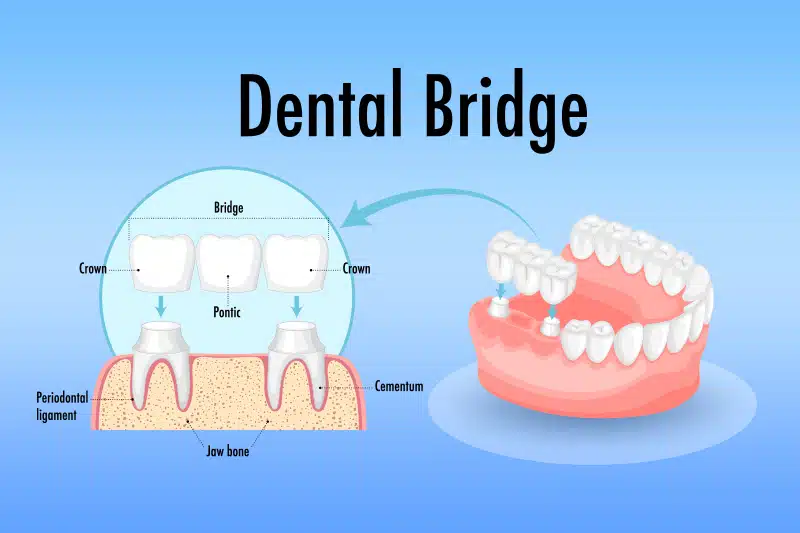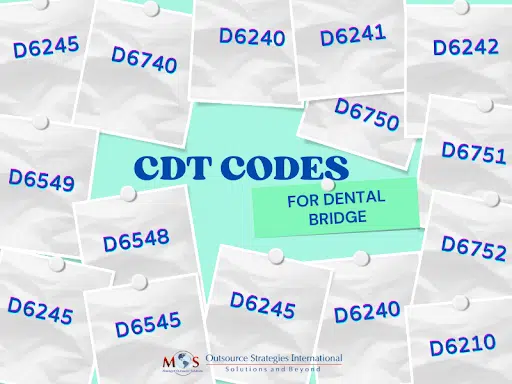

Dental bridges are common and effective solutions for replacing missing teeth and restoring oral health and function. These are false teeth that fill the missing gap between teeth. This dental restoration procedure replaces one or more missing teeth on either side of the gap. As dental claim submission for this procedure is a complex process, dentists rely on dental billing Companies to submit claims on time with accurate dental codes. Let’s look at the different types of dental bridges and the CDT codes for this procedure.
For individual cases, four different types of dental bridges are available, such as – Traditional dental bridge, Cantilever dental bridge, Maryland bonded bridge, and Implant-supported Bridge. Traditional dental bridge is the most common type that consists of one dental crown attached to each of the two teeth on either side of the gap, and a false tooth or teeth fill in the space. Cantilever dental bridge has a slight deviation from the traditional one, but Maryland bonded and Implant-supported dental bridges share the same structure like traditional dental bridge.

Dental Recement Bridge
Dental billing, coding and claim submission require expertise, as even a simple error would result in claim denials. Other common reasons for claim denials are – incomplete or incorrect demographic information of patients, error in verifying the eligibility and coverage of insurance, not filing claims on time, submitting claims without sufficient supporting documents and so on. It is ideal to consider professional support from an experienced dental billing company.

Amber Darst is our Solutions Manager in the Healthcare Division, Practice and RCM. With a rich background in dental services, her expertise ranges from insurance coordination to office management.